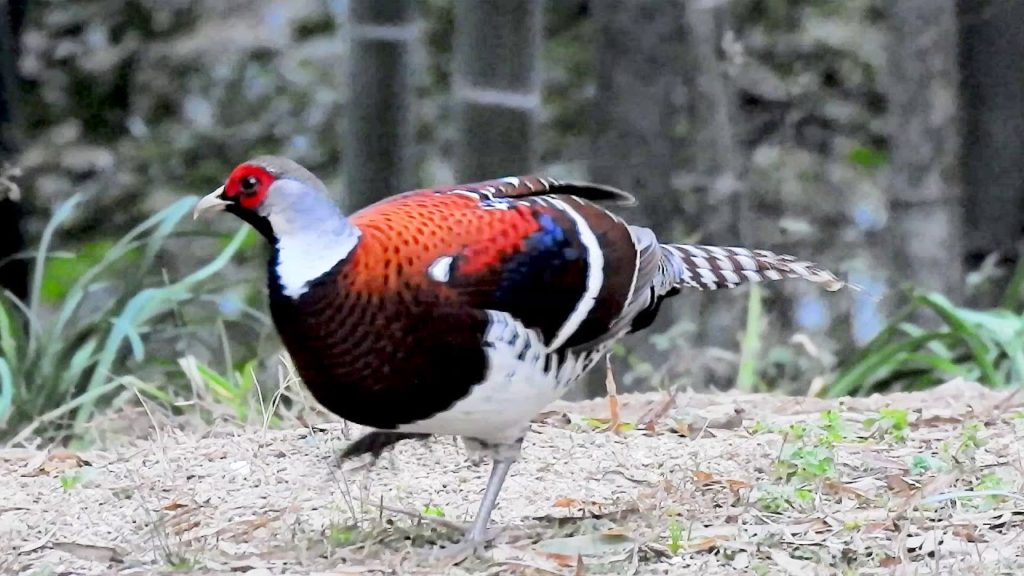Elliot's Pheasant
Syrmaticus ellioti
Available September to December.
Other Names: Chinese Barred-Backed Pheasant, Bar-Backed Pheasant
Elliot's Pheasants are a beautiful and rare breed of ornamental pheasant. They are easy to tame and can be very friendly. Elliot's Pheasants are named after a famous orinthologist, Daniel Elliot, who died in 1915, and was one of the founders of the American Orinthologists Union. Males are strikingly beautiful, with a bright red ring around each eye, a pale grey head and belly, lovely chestnut brown breast and neck, grey barring on the back and a grey and brown tail. Males have their full plumage by one year of age, but are not fertile until the age of two. Females are generally a bit duller in color with dark brown and grey mottling all over. Juveniles resemble females. Males will grow up to 31 inches in length, females around 20 inches.
Range: Elliot's Pheasants live in southwest and southeast China.
Habitat: Elliot's Pheasants can be found in subtropical forests at an altitude of 650 - 6200 feet. Dense canopy cover is necessary for successful breeding.
Status in the wild: Elliot's Pheasant is listed as Near Threatened by the International Union for the Conservation of Nature (ICUN). There is some conflict regarding the status of Elliot's Pheasants in the wild. Their native habitat is heavily populated by humans, who cut and burn the forests where they live. While there is debate about how much the wild population of Elliot's Pheasants has declined, all experts agree that it is declining. It is illegal in China to hunt Elliot's Pheasants, but it still continues and hunting is thought to be one of the factors contributing to the declining number of these birds in the wild.
Status in aviculture: While wild populations of Elliot's Pheasants are thought to be declining, their numbers in captivity are quite stable.
Breeding and Incubation: Elliot's Pheasants breeding season is March to May and the males and females are able to reproduce the spring after hatching. The female will lay a clutch of 5-8 pinkish-white eggs that incubate for 25 days. One male will mate with two or three females. The females is solely responsible for making the nest, incubating and caring for the chicks.
Lifespan: Elliot's Pheasants will live 7-12 years.
Mature Weight:
Housing Requirements: Elliot's Pheasants are very cold hardy. It is necessary that aviaries provide plenty of shade.
Diet: Elliot's Pheasants are omnivores and enjoy a diet of seeds, greens, fruit, grains and other foods available seasonally. A commercial diet of game bird, supplemented with as much natural diet as possible is acceptable
Elliot's Pheasants are named after a famous orinthologist, Daniel Elliot, who died in 1915, and was one of the founders of the American Orinthologists Union.
Elliot's Pheasants are among the more difficult of the pheasants to raise, mainly because the males are quite aggressive toward the females. They also require a great deal of cover. Their natural habitat is thick, heavily forested areas offer enough cover where the hens can escape the aggression of the males. Some breeders have found that clipping the wings of the males aids with aggression issues.

